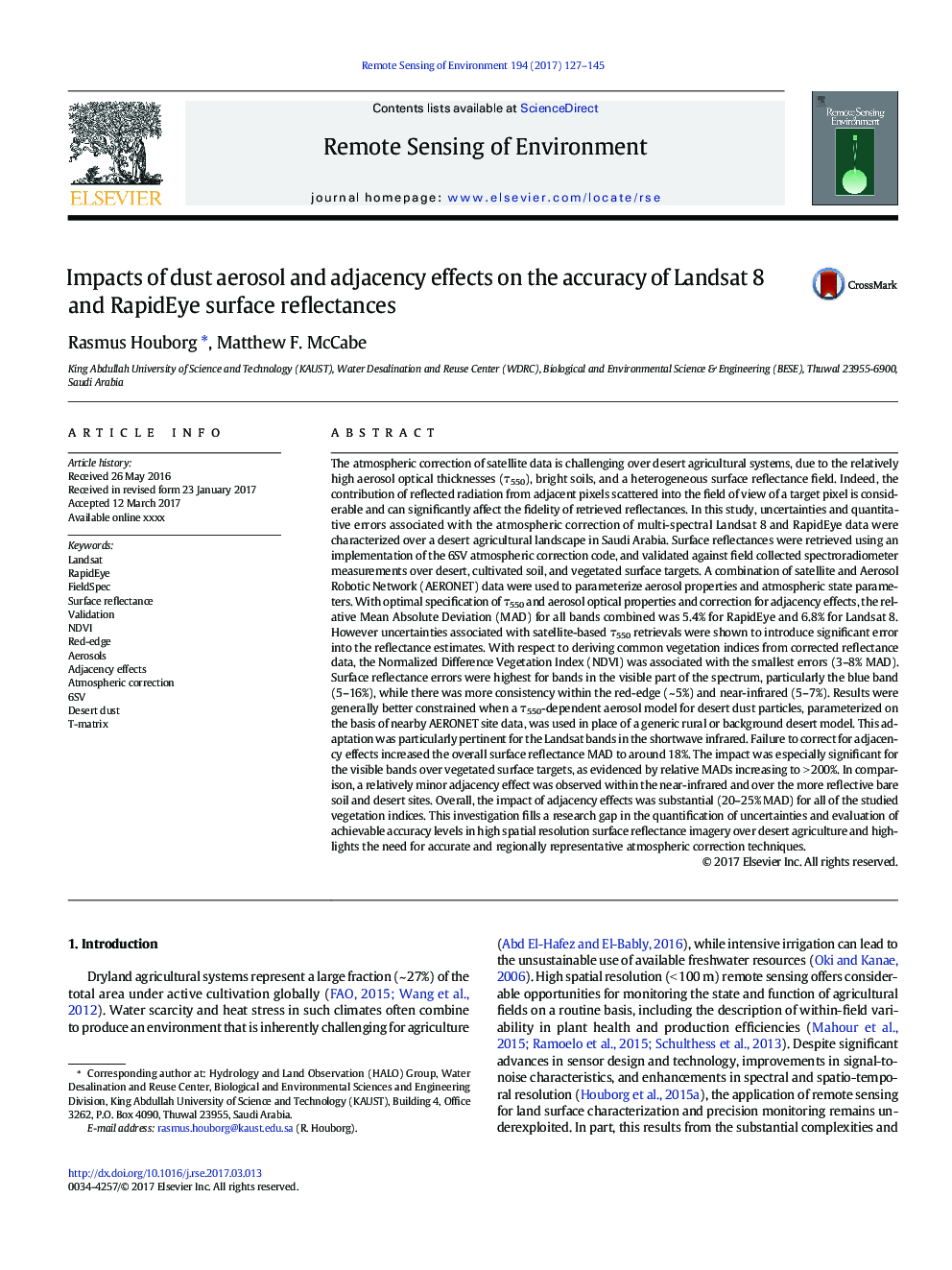| Article ID | Journal | Published Year | Pages | File Type |
|---|---|---|---|---|
| 5754996 | Remote Sensing of Environment | 2017 | 19 Pages |
Abstract
The atmospheric correction of satellite data is challenging over desert agricultural systems, due to the relatively high aerosol optical thicknesses (Ï550), bright soils, and a heterogeneous surface reflectance field. Indeed, the contribution of reflected radiation from adjacent pixels scattered into the field of view of a target pixel is considerable and can significantly affect the fidelity of retrieved reflectances. In this study, uncertainties and quantitative errors associated with the atmospheric correction of multi-spectral Landsat 8 and RapidEye data were characterized over a desert agricultural landscape in Saudi Arabia. Surface reflectances were retrieved using an implementation of the 6SV atmospheric correction code, and validated against field collected spectroradiometer measurements over desert, cultivated soil, and vegetated surface targets. A combination of satellite and Aerosol Robotic Network (AERONET) data were used to parameterize aerosol properties and atmospheric state parameters. With optimal specification of Ï550 and aerosol optical properties and correction for adjacency effects, the relative Mean Absolute Deviation (MAD) for all bands combined was 5.4% for RapidEye and 6.8% for Landsat 8. However uncertainties associated with satellite-based Ï550 retrievals were shown to introduce significant error into the reflectance estimates. With respect to deriving common vegetation indices from corrected reflectance data, the Normalized Difference Vegetation Index (NDVI) was associated with the smallest errors (3-8% MAD). Surface reflectance errors were highest for bands in the visible part of the spectrum, particularly the blue band (5-16%), while there was more consistency within the red-edge (~Â 5%) and near-infrared (5-7%). Results were generally better constrained when a Ï550-dependent aerosol model for desert dust particles, parameterized on the basis of nearby AERONET site data, was used in place of a generic rural or background desert model. This adaptation was particularly pertinent for the Landsat bands in the shortwave infrared. Failure to correct for adjacency effects increased the overall surface reflectance MAD to around 18%. The impact was especially significant for the visible bands over vegetated surface targets, as evidenced by relative MADs increasing to >Â 200%. In comparison, a relatively minor adjacency effect was observed within the near-infrared and over the more reflective bare soil and desert sites. Overall, the impact of adjacency effects was substantial (20-25% MAD) for all of the studied vegetation indices. This investigation fills a research gap in the quantification of uncertainties and evaluation of achievable accuracy levels in high spatial resolution surface reflectance imagery over desert agriculture and highlights the need for accurate and regionally representative atmospheric correction techniques.
Keywords
Related Topics
Physical Sciences and Engineering
Earth and Planetary Sciences
Computers in Earth Sciences
Authors
Rasmus Houborg, Matthew F. McCabe,
